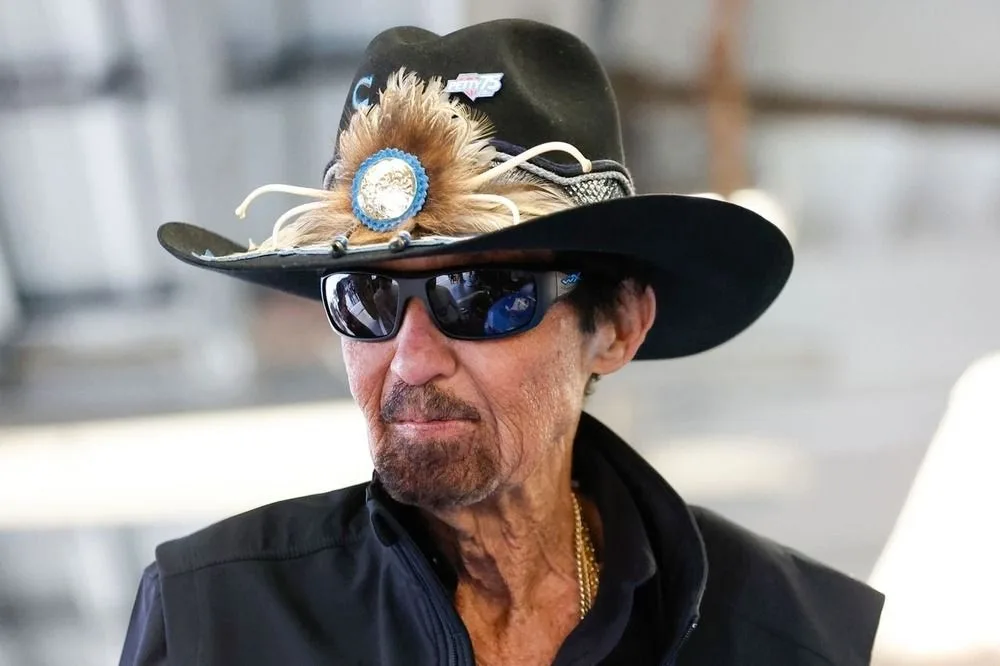UNBELIEVABLE DISCOUNTS AT AMAZON.COM ||
The recent news about 23XI Racing and Front Row Motorsports (FRM) filing an antitrust lawsuit against NASCAR is an incredible step to try and limit the power of the dynastic France family. It’s also not the first time those within the sport pushed back against the ruling body.
It’s very fitting that we head to Talladega Superspeedway immediately after this court filing, as this track played host to one of the most dramatic showdowns between the sport and its competitors in NASCAR history. So iconic were the happenings at Talledega in ’69 that it was even mentioned in the court filing by 23XI and FRM as an example of the France family’s hold over the sport.
Welcome to NASCAR’s biggest oval
The year was 1969 and the newly constructed 2.66-mile superspeedway was about to host its first-ever Cup race. It was known as Alabama International Motor Speedway back then. Its construction was Bill France Sr.’s own project at a cost $5 million. The track was barely completed in time and featured unfinished suites for the opening race weekend.
During testing, just days ahead of the event, drivers were setting unofficial closed circuit records on the monstrous superspeedway. But, a rash of tire issues posited concerns throughout the paddock. There were also complaints surrounding bumps and possible holes. Firestone and Goodyear, who were in the midst of a tire war within the sport, attempted to introduce harder compounds for the race, but they did not alleviate the problem. As a result, Firestone pulled out of the race while Goodyear remained committed.
NASCAR visionary Bill France Sr. was the first inductee announced as part of the inaugural Hall of Fame class. (Note: This track is not Talladega)
Photo by: Getty Images
To prove to drivers how safe the track was, France himself decided to take a drive around it. Yet, drivers remained unconvinced as he never topped 160mph. France’s advice was to simply back down how fast they were running, but that was obviously unrealistic as someone would always push that limit in attempt to win the race, forcing the others to follow dangerously in suit.
The PDA, punches thrown and a full boycott
At the time, there was a Professional Driver Association (PDA) led by Richard Petty, who went on to become the winningest driver in NASCAR Cup Series history. The PDA approached the sanctioning body with a proposal to postpone the inaugural event. France, who founded NASCAR in 1948, refused their request. He was no fan of the PDA, or anything that resembled a union. He had previously busted up an attempt to form a union in 1961, banning star drivers Curtis Turner and Tim Flock. They ended up suing NASCAR, and both drivers were reinstated a few years later.
During a contentious meeting with the PDA, France accused Bobby Allison of being too scared to race. Upon hearing this, LeeRoy Yarbrough stepped forward and reportedly punched France in the face, knocking him to the ground. That was the end of discussions between the two parties. Nearly all 36 members of the PDA immediately pulled out of the race. This included future Hall of Famers Richard Petty, David Pearson, Bobby Allison, Donnie Allison, Cale Yarborough, Wendell Scott, and Buddy Baker.
Talladega Super Speedway
Photo by: Matthew T. Thacker / NKP / Motorsport Images
The show goes on
The race still happened, with PDA member Richard Brickhouse breaking rank and not withdrawing from the event. Another wrinkle to all of this drama was the fact that Chrysler was using Talladega to debut their brand new Dodge Charger Daytona with its iconic rear wing. The Detroit-based brand then convinced Brickhouse to run the race while the rest of the PDA walked. He was one of just three Cup drivers who didn’t participate in the boycott alongside Jim Vandiver and Bobby Isaac.
To fill out the remainder of the field, France looked to a lower division — the NASCAR Grand American Series. He invited those drivers to compete in the 500-mile event, even allowing them to bring their smaller and slower cars into the field. France also offered fans in attendance free admission into the 1970 Daytona 500 as compensation for the lack of star power at Talladega.
Race day morning, Goodyear flew in new tires and despite the concern that started all of this, there ended up being no major issues. With just three true Cup cars in the field, Brickhouse went on to capture the checkered flag in what would be his only Cup Series victory. Among the many lower-level drivers who filled out the field was a rookie making his Cup debut — future NASCAR Hall of Fame team owner and then-driver Richard Childress.
The PDA disbanded soon after the 1969 Talladega debacle, much to the satisfaction of France. He maintained complete control over the sport, and the France family continues to do so to this very day. 23XI Racing and Front Row Motorsports now seek to challenge that authority due to what they believe are unfair terms within the 2025 Charter Agreement. They aren’t the first to stand against the France family, but will they succeed where all before them have failed? Well, they do have Michael Jordan on their side…

